Coal Mining in Stanley
The town did not begin substantial growth until the 19th century when rich deposits of high grade Durham coking coal were found in the area.
Born in 1846 at Shield Row was Lord Joicey, one of the most famous coal owners in the country, hence Joicey’s Square. The Joicey family sunk their first pit in Stanley Parish, South Tanfield and it was through their mining operations that led to the development of Stanley. , Maps (c1856) shows Old Coal Shafts to the south of Stanley; just to to the south again beside Stanley Hall is marked West Stanley Colliery with coke ovens. To the east is East Stanley Colliery, and to the north-east is Beamish Colliery. To the north-west is Tanfield Lea Colliery.
They also built hundreds of workmen’s houses in East Stanley, Shield Row, Kip Hill and Oxhill. Stanley really owed its growth to coalmining. The inhabitants relied on the six collieries within the town itself and another forty within a two miles radius for employment.
There are two memorable dates in Stanley’s coal mining history. 19 April 1882 and 16 February 1909 when explosions occurred at West Stanley Colliery owned by the Burn family.
West Stanley Pit Disaster
On Tuesday 16th February 1909 a muffled explosion rocked Stanley and about a minute later there was a second explosion with flames shooting into the sky.
The West Stanley Pit (Burns Pit) had exploded. Panic followed and people headed towards the pit head where, in no time, thousands were gathered at the stricken colliery. As the current manager was away there was little organisation until Mr Fairley, the manager of South Moor Collieries, arrived.
Mr Ralph Stevenson, the colliery engineer was closest to the explosion and looked down the North shaft where there was a red glow. As he stood back a ball of fire leapt into the sky then the smoke was sucked back down into the pit.
The explosion killed 18 in the Tilley seam, 63 in the Townley seam, 38 in the Busty seam and 48 in the Brockwell seam.
Mark Henderson started leading 34 men to safety but 7 bolted for the shaft bottom and died. The 27 miners remaining began singing the hymn Lead Kindly Light. During the hymn young Jimmy Gardner, aged 14,died. Henderson realised they would have to get out so headed towards the shaft bottom collapsing twice and falling over coal, timber and dead bodies.
It was a quarter of a mile to the shaft bottom where he phoned and informed them there were 26 alive. He then made 5 journeys back and forth bringing his men out in small groups.
Four others were rescued. Matt Elliot from the Busty seam. Cogan Leadbitter, John Smith and Paddy Joyce were rescued from the Townley seam.
Last man out, Paddy Joyce, said that he and six others tried to escape the gas but one by one collapsed and died. Luckily he collapsed on loose coal where a trickle of fresh air came from below which saved his life.
Police estimated a crowd of 20,000 would attend the funerals but on the first day, February 21, 200,000 filled the town to bursting point. The funerals were headed by banners from the Durham Miners Association and the West Stanley Colliery (Burns). Some effort was made to obtain crowd control but the situation was impossible.
Everything came to a grinding halt. High Street, Front Street and Station Road were impassable. There was great distress as relatives were unable to get their loved ones to St Andrew’s churchyard. Services continued all day.
The mass graves were in the form of long trenches. Several widows, overcome with grief, fell into the mass grave. The Durham Light Infantry attended the last funeral on the first day at 5.30 pm. they fired a volley of shots over the grave and played the Last Post.
All the miners were members of the Northumberland and Durham Permanent Relief Fund which meant that the widows received 5 shillings per week and 2 shillings for each dependent child. A disaster fund raised £17,919 for the 238 dependents.
The West Stanley Pit Disaster, has been classed as one of the worst coal mining disasters in British history.

